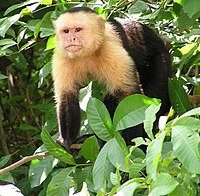
Diet diversity and seasonality of robust capuchins (Sapajus sp.) in a tiny urban forest
Sign Up to like & getrecommendations! Published in 2022 at "American Journal of Primatology"
DOI: 10.1002/ajp.23396
Abstract: Capuchins are omnivorous neotropical primates that can survive in urban forests by supplementing their diet with human foods. However, few studies have analyzed the impact of these resources on their diet diversity and feeding seasonality.… read more here.
Keywords: capuchins sapajus; food; seasonality; human foods ... See more keywords

Chemistry, Antimicrobial Mechanisms, and Antibiotic Activities of Cinnamaldehyde against Pathogenic Bacteria in Animal Feeds and Human Foods.
Sign Up to like & getrecommendations! Published in 2017 at "Journal of agricultural and food chemistry"
DOI: 10.1021/acs.jafc.7b04344
Abstract: Cinnamaldehyde is a major constituent of cinnamon essential oils produced by aromatic cinnamon plants. This compound has been reported to exhibit antimicrobial properties in vitro in laboratory media and in animal feeds and human foods… read more here.
Keywords: human foods; animal feeds; antibiotic activities; chemistry ... See more keywords

The cascading effects of human food on hibernation and cellular aging in free-ranging black bears
Sign Up to like & getrecommendations! Published in 2019 at "Scientific Reports"
DOI: 10.1038/s41598-019-38937-5
Abstract: Human foods have become a pervasive subsidy in many landscapes, and can dramatically alter wildlife behavior, physiology, and demography. While such subsidies can enhance wildlife condition, they can also result in unintended negative consequences on… read more here.
Keywords: human foods; cellular aging; human food; hibernation ... See more keywords

Darwin's small and medium ground finches might have taste preferences, but not for human foods
Sign Up to like & getrecommendations! Published in 2022 at "Royal Society Open Science"
DOI: 10.1098/rsos.211198
Abstract: Urbanization is rapidly changing ecological niches. On the inhabited Galapagos Islands, Darwin's finches consume human-introduced foods preferentially; however, it remains unclear why. Here, we presented pastry with flavour profiles typical of human foods (oily, salty… read more here.
Keywords: ground finches; human foods; medium ground; taste preferences ... See more keywords